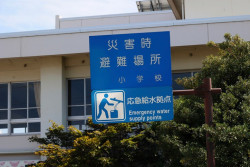
July 28, 2011
Tohoku Kids Support Project
Helping the region's stricken kids find some kind of normalcy
By Metropolis
Originally published on metropolis.co.jp on July 2011

For those children stranded by the March 11 earthquake and tsunami who are the last surviving members of their family, the prospects are not good. Adoption and fostering is still a rarity in Japan, so these orphans have been ending up in state-run group homes—which are often short-staffed and underfunded. Even in the best cases, children lack the one-on-one interaction conducive to healthy development, and the family support needed to fit into Japanese society.
Worrying whether Japan’s orphanages have the capacity to handle the physical and psychological needs of these traumatized children, some childcare experts have stepped in to help.
“The initial concern is how existing homes will cope with more children,” says Amy Moyers-Knopp, executive director of Living Dreams, an organization in Tokyo matching volunteers with children’s homes. Part of their work is to reach out to homes in affected areas to see what kind of capacity they have.
The Tohoku Kids Support Project was launched by Living Dreams, in conjunction with national volunteer network Smile Kids Japan. They are raising money and mobilizing people in support of tsunami orphans. The first tier of their efforts was to meet physical needs like food, clothing and school supplies, as well as to replace personal items like toys and books.
“When you lose everything, including those personal material possessions, you might feel like you’ve lost a part of yourself, even though you are considered ‘lucky’ having survived,” says Moyers-Knopp. “Having a few personal items replaced can bring a small sense of normalcy, which in turn brings stability into these kids’ lives little by little.”
Also in the interest of fostering a sense of normalcy, the group is working with homes to provide counseling and therapeutic activities like sports, arts lessons and fun outings. “While it is hard to imagine these homes thinking about having dance lessons or kid yoga classes right now, these are exactly the types of activities we hope to connect to the homes, so the kids can start to feel like kids again,” explains Moyers-Knopp.
The activities that TKSP is working on will provide kids living in group homes with two important things: something to look forward to, and a dependable adult they can regularly spend time with—something that can make a huge difference in their ability to adjust to their new situation.
Even amid tales of fleeing the tsunami and missing parents, volunteers have been amazed at the children’s resilience and their ability to smile and laugh when someone takes the time to talk and play with them. With more people willing to make a commitment to these kids, hopefully they will eventually be able not just to survive, but to flourish.
Volunteer Centers and Resources
- For more information or to volunteer, see Living Dreams or Smile Kids Japan.
- To make a donation, see here.







